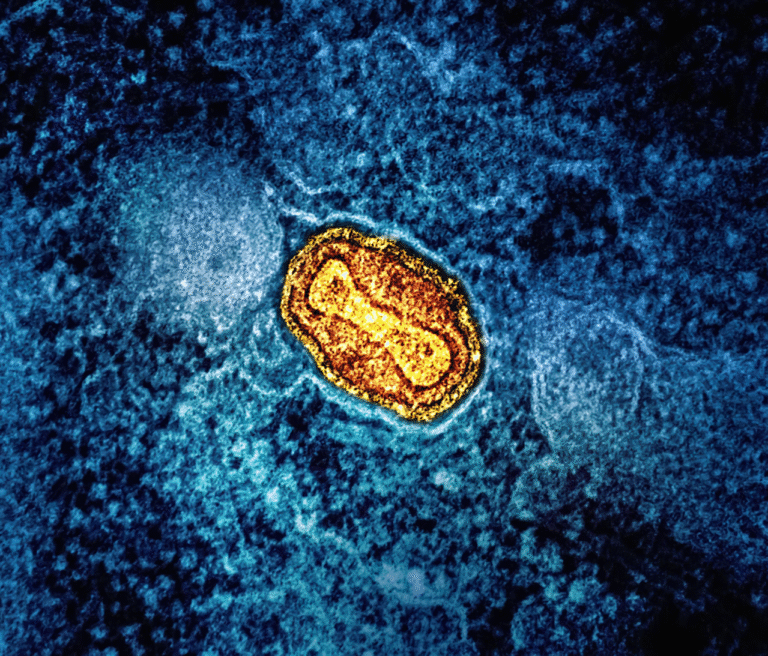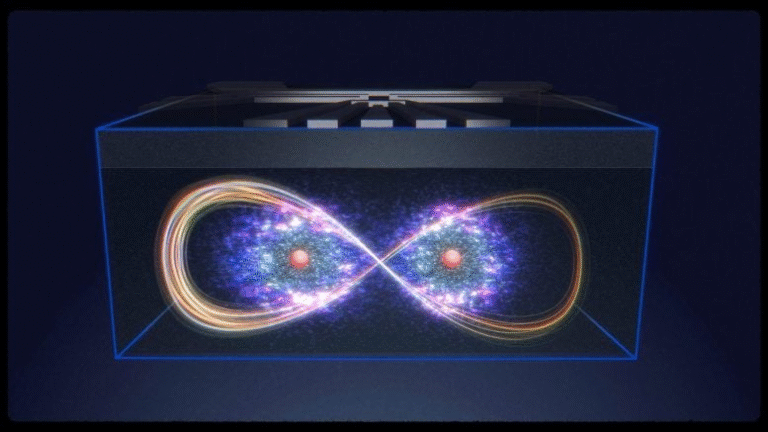Supercomputer Successfully Recreates a Wildfire That Made Its Own Thunderstorm

Wildfires are already terrifying forces of nature—but when they start creating their own weather, the situation becomes even more extreme. In a groundbreaking new study, researchers have finally managed to simulate a wildfire-generated thunderstorm—a phenomenon known as a pyrocumulonimbus cloud, or pyroCb—inside a full Earth system model. This is the first time scientists have successfully done so, marking a huge leap in our ability to understand how wildfires and the atmosphere interact on a planetary scale.
The achievement was led by Ziming Ke and his team at the Desert Research Institute (DRI), in collaboration with scientists from Lawrence Livermore National Laboratory, U.C. Irvine, and the Pacific Northwest National Laboratory. Their work, published in Geophysical Research Letters on September 25, 2025, used the U.S. Department of Energy’s Energy Exascale Earth System Model (E3SM) to recreate the chaotic birth of fire-fueled thunderstorms that once seemed impossible to model accurately.
What Exactly Is a Pyrocumulonimbus Cloud?
A pyrocumulonimbus cloud forms when an extreme wildfire produces enough heat to lift massive amounts of smoke, moisture, and ash high into the atmosphere. As the rising hot air cools, it condenses into a towering thundercloud—sometimes stretching more than 16 kilometers into the sky.
These fiery clouds are capable of generating lightning, intense winds, and even their own rainfall, all while spreading embers that ignite new fires. In the most severe cases, they inject smoke and aerosols into the stratosphere—much like a volcanic eruption—where they can remain for months, affecting weather and climate around the world.
Scientists estimate that tens to hundreds of these storms occur each year across the globe, and their frequency appears to be increasing as climate change drives hotter and more intense wildfire seasons.
The Real-World Events Behind the Simulation
The study centered on two infamous wildfire events in California: the 2020 Creek Fire and the 2021 Dixie Fire.
On September 5, 2020, the Creek Fire exploded so violently that it began creating its own weather system. Within hours, it generated a massive pyrocumulonimbus cloud that unleashed lightning, altered local wind patterns, and accelerated the fire’s spread. Satellite data later showed three distinct pyroCb events forming in just the first three days.
For years, scientists had struggled to simulate these processes. Wildfire models and climate models often operated at vastly different scales—one focusing on terrain-level fire behavior, the other on large-scale atmospheric motion. But this new framework successfully bridged that gap.
The model accurately reproduced the timing, altitude, and structure of the Creek Fire’s thunderstorm, matching observations from satellites and radar data. The simulated cloud tops reached about 16.5 kilometers, nearly identical to real measurements taken during the event.
The team didn’t stop there. They applied the same framework to the Dixie Fire of 2021, which occurred under very different atmospheric conditions. Remarkably, the model still generated multiple thunderstorm formations, showing that this new system wasn’t just a one-off success—it could adapt to varying environments.
How the Scientists Did It
At the core of this achievement is a new wildfire–Earth system modeling framework. It’s a mouthful, but in simple terms, the researchers taught a global climate model to “think” like a wildfire.
Here’s what made it work:
- High-Resolution Fire Energy Data
The team input detailed data about the fire’s radiative power—essentially how much heat energy the fire was pumping into the atmosphere at different times and places. - Plume-Rise Model
A one-dimensional plume-rise system was integrated into the model. This helps calculate how far the smoke, heat, and moisture from the fire are lifted based on local wind and temperature conditions. - Vertical Water Vapor Transport
One of the biggest breakthroughs was adding a module that lifts moisture vertically through the atmosphere, mimicking how a wildfire draws and releases water vapor. Without this, the model couldn’t form realistic clouds. - Surface Heat Flux Simulation
The model also tracked how heat spreads across the fire’s surface and how it changes over time—crucial for triggering convection (the upward movement of air that forms clouds). - Coupling with a Global Earth System Model
All of these fire-level processes were combined with the DOE’s E3SM, a powerful model capable of simulating the entire Earth’s climate system at high resolution.
To test how each part contributed, the researchers ran sensitivity experiments—turning off one component at a time. When they removed the vertical moisture transport, the pyrocumulonimbus failed to form. When they lowered the model’s spatial resolution, the simulation lost realism. These tests confirmed that all parts of the system are essential for accurately capturing these extreme weather events.
What They Found
When the full model was run, it reproduced key features of the observed pyroCb events:
- The onset time of thunderstorm formation matched real-world data.
- The cloud-top heights and vertical structure closely resembled satellite and radar imagery.
- The spatial extent and motion of the storm clouds mirrored what was seen during the actual fires.
- The model also revealed how fire-generated winds and heat interact with surrounding air layers, altering local weather patterns.
Even finer details, like radar reflectivity patterns, were accurately captured—showing that the simulation wasn’t just roughly correct, but scientifically precise.
Why It Matters for Climate Science
This breakthrough isn’t just about wildfires—it’s about how Earth’s climate system works under extreme stress.
When a pyrocumulonimbus cloud forms, it pumps enormous amounts of smoke, aerosols, and water vapor into the upper atmosphere. These particles can reflect sunlight, trap heat, or even affect ozone chemistry in the stratosphere.
Studies have shown that wildfire plumes can circle the globe, influencing cloud formation, polar ice melt, and atmospheric composition thousands of miles away from their origin. Some researchers even compare their impact to small volcanic eruptions in terms of how they alter Earth’s radiation balance.
By finally being able to simulate these processes inside a full Earth system model, scientists can now begin to predict when and where such storms might form, and assess their long-term effects on global climate.
This also means climate models will become more realistic in representing how wildfires influence everything from regional weather to planetary feedback loops.
Beyond the Model: The Bigger Picture of PyroCb Storms
Pyrocumulonimbus storms are one of the most extreme manifestations of the fire–atmosphere connection. They’re not just meteorological curiosities—they’re dangerous events with serious real-world consequences.
For firefighters, these storms can mean rapid changes in wind direction, making containment nearly impossible. The lightning produced can ignite new blazes miles away. For communities, it can mean worsening air quality and even ashfall hundreds of kilometers downwind.
One striking example came from Australia’s Black Summer fires of 2019–2020, when multiple pyroCb events injected smoke into the stratosphere, creating a smoke layer that circled the planet for months. That event alone was estimated to have a measurable effect on Southern Hemisphere climate patterns.
As the planet warms, scientists expect these self-made firestorms to become more frequent and more intense, especially in regions like western North America and Australia where conditions for large wildfires are worsening.
Why This Breakthrough Is a Big Deal
Until now, wildfire simulations and Earth system models were like two separate worlds. Fire models could predict how flames move across the ground, but they stopped short of simulating large-scale atmospheric effects. Climate models, on the other hand, didn’t have the fine-scale detail needed to capture the physics of fire-driven convection.
This study finally closes that gap. By merging both scales into one framework, scientists can now:
- Simulate how wildfires evolve under changing climate conditions.
- Forecast fire-induced storms and their potential feedbacks.
- Explore how smoke and aerosols influence global radiation balance.
- Improve disaster preparedness and climate resilience planning.
It’s a major step forward in what researchers call wildfire–climate coupling, giving us a more complete picture of how our planet’s systems are intertwined.
Challenges and Next Steps
While this breakthrough is impressive, there’s still work ahead. Modeling such detailed processes across the entire planet is computationally demanding. Running global simulations at this level of detail requires supercomputers and can take weeks to process a single event.
There are also uncertainties in how parameters like fire intensity or local humidity are represented. Slight differences in these inputs can change outcomes dramatically. Additionally, observational data for validation are limited—especially for the upper parts of these clouds where instruments can’t easily measure conditions.
Future research aims to apply this framework globally and simulate pyroCb events across different ecosystems—from boreal forests in Canada to tropical savannas in Africa—to understand how universal these findings are.
The Future of Fire–Climate Research
The study represents more than just a technical success—it’s a window into the future of climate modeling. With the ability to simulate pyroCb storms, scientists can explore questions like:
- How much carbon and aerosols do wildfires inject into the stratosphere each year?
- Could increasing pyroCb activity accelerate climate feedback loops?
- How will air quality and public health be affected as these events grow more common?
By understanding the mechanics of these self-made thunderstorms, researchers can better predict—and hopefully mitigate—the impacts of a warming, burning planet.
The DRI team’s achievement marks a turning point in Earth system science, showing that with advanced computing and interdisciplinary collaboration, we can now model some of nature’s most violent and complex phenomena.
Research Reference:
Simulating Pyrocumulonimbus Clouds Using a Multiscale Wildfire Simulation Framework – Geophysical Research Letters (2025)





